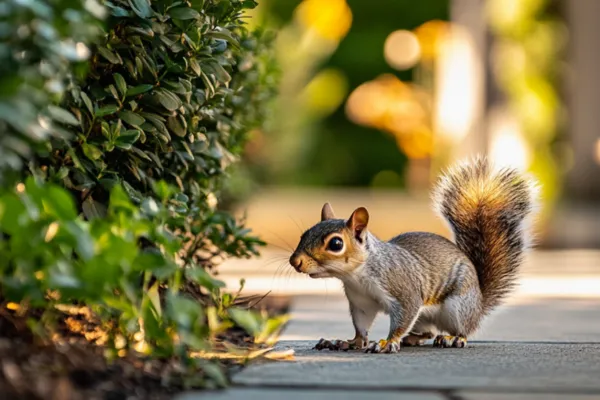
The St. Catharines Pest Journal
The St. Catharines Pest Control Journal

New Year, No Pests: Setting Up for a Pest-Free 2025
Identifying Your Pest Management Needs
Here’s how to identify your needs:
Assess Past Infestations:
Review any past pest issues, such as ants in the kitchen during spring or mice in the attic during winter.
Note the severity and duration of past infestations to help prioritize future prevention efforts.
Understand Seasonal Patterns:
Spring: Increased activity from overwintering pests like spiders and beetles.
Summer: Peak time for ants, flies, and stinging insects that thrive in warm weather.
Fall: Rodents and other pests seeking shelter as temperatures drop.
Winter: Pests like cockroaches and spiders look for warm spaces inside homes to survive.
Identify At-Risk Areas in Your Home:
Check areas that are commonly affected, such as damp basements prone to silverfish or kitchens susceptible to ant invasions.
Look for structural vulnerabilities like cracks, holes, and gaps that can serve as entry points for pests.
Consider Environmental Factors:
Be aware of nearby water bodies that could contribute to mosquito problems.
Understand landscaping issues that might attract pests, such as overgrown bushes or piled mulch against the house.
Set Monitoring Points:
Establish locations around your property for regular monitoring, like bait stations for rodents or sticky traps for insects, to quickly identify new pest activities.
Implement a Seasonal Pest Management Plan
Here’s a detailed seasonal pest management plan that Petty Pest Control can customize for your home:
Winter: Secure and Seal
Inspect and Seal Entry Points: Focus on sealing cracks and gaps in the foundation, windows, doors, and other potential entry points to prevent pests seeking warmth.
Attic and Basement Checks: These are common areas where pests like to overwinter. Ensure they are well insulated and free of holes.
Piping and Vents: Check for openings around pipes and vents that might allow small rodents and insects inside.
Spring: Preemptive Measures
Comprehensive Property Inspection: Schedule a detailed inspection with Petty Pest Control to identify potential nests and emerging infestations.
Landscaping and Pruning: Trim back trees and bushes from the home’s exterior to reduce access points for pests moving indoors.
Barrier Treatments: Apply preventive treatments around the perimeter of your home to deter common spring pests like ants, ticks, and fleas.
Summer: Moisture and Hygiene Control
Address Moisture Issues: Ensure that your yard has proper drainage and that gutters are clean to prevent standing water, which is a prime breeding ground for mosquitoes.
Food and Waste Management: Keep kitchen areas clean and secure garbage bins to avoid attracting pests like roaches and rodents.
Regular Yard Maintenance: Mow the lawn regularly and remove any debris or clutter where pests might nest.
Fall: Fortification and Cleanup
Clear Debris: Remove fallen leaves and debris from your property, which can harbor pests or provide them with a habitat.
Exterior Checks: Ensure the home’s exterior is fortified against pests by checking for and sealing any new cracks and gaps that may have developed.
Pre-Winter Treatment: Consider having Petty Pest Control apply a protective barrier treatment to prevent pests from entering as they seek shelter from the cold.
Proactive Monitoring Throughout the Year
To ensure your home remains pest-free, proactive monitoring is a cornerstone of effective pest management. Here’s how Petty Pest Control ensures continual vigilance:
Routine Inspections: Scheduled regular inspections to identify early signs of pest activity and potential entry points before they become infestations.
Monthly or Quarterly Visits: Depending on your needs and the vulnerability of your property to pests.
Seasonal Assessments: Specific checks aligned with seasonal pest activities to preemptively address potential problems.
Real-Time Monitoring: Utilization of advanced monitoring tools to keep tabs on pest presence and activity levels.
Motion Sensor Cameras: For larger wildlife like raccoons or squirrels.
Infrared Technology: To detect heat signatures from rodents and other common household pests in hidden areas.
Preventive Treatments: Application of preventative measures based on the results of routine checks to maintain a protective barrier around your property.
Perimeter Spraying: Creating a chemical barrier to deter insect entry.
Bait Stations: Strategically placed to control rodent populations.
Tailored Treatment Strategies
Understanding that each home and pest situation is unique, Petty Pest Control develops customized solutions tailored to the specific needs of your property and local pest trends:
Customized Pest Control Plans:
Environmental Assessments: Understanding the ecological factors of your property to develop an effective plan.
Targeted Treatments for Specific Pests: Using the right tools and methods for the specific pests identified, whether insects, rodents, or larger wildlife.
Safe and Effective Solutions:
Environmentally Safe Treatments: Use of EPA-approved, eco-friendly pest control substances that are safe for both indoor and outdoor use.
Mechanical Traps and Baits: Employing non-toxic methods wherever possible to ensure the safety of both pets and children.
Innovative Approaches: Incorporating the latest pest control technologies and methodologies to enhance effectiveness and efficiency.
Adaptability to Seasonal Changes:
Weather-Resistant Treatments: Suitable for different weather conditions, ensuring longevity and effectiveness.
Season-Specific Strategies: Adjusting treatment strategies to combat the particular pests most active during each season.
Visit our website or contact Petty Pest Control directly to learn more about our services and how you can benefit from a customized pest management plan. Let us help you make 2025 your most pest-free year yet!

Schedule a Pest Inspection
Ready to schedule a pest inspection? Contact us today.

